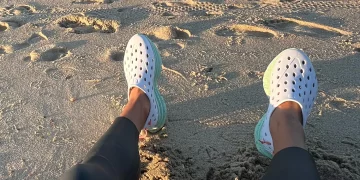Hiking is one of the most exhilarating ways to explore nature. Whether you’re venturing into the wilderness for a weekend trek or preparing for a multi-day expedition, your backpack is arguably the most critical piece of gear you’ll carry. But choosing the right backpack for long hikes can be overwhelming. There are dozens of options, materials, features, and styles to consider. Selecting a backpack isn’t just about brand appeal—it’s about comfort, functionality, and durability. In this guide, we’ll break down everything you need to know to choose the right backpack for long hikes.
1. Why the Right Backpack Matters
Imagine setting out on a five-day hike only to feel your shoulders screaming in pain by the second day. Or worse, realizing that your gear is scattered inside a backpack that doesn’t fit your body. The right backpack transforms a challenging hike into an enjoyable adventure. It distributes weight efficiently, provides easy access to essentials, and prevents injuries caused by poor load management.
In essence, a backpack is more than a container; it’s your hiking companion. Selecting wisely can mean the difference between a memorable adventure and a miserable ordeal.
2. Understanding Backpack Types
Backpacks come in various types, each designed for specific hiking scenarios. Understanding these categories is the first step toward making an informed decision.
Daypacks (20–35L)
Daypacks are ideal for short hikes, usually under a day or with minimal overnight gear. They are lightweight, compact, and usually have fewer compartments. They are perfect for carrying water, snacks, and light layers.
Pros: Lightweight, versatile, easy to carry
Cons: Limited storage, not suitable for multi-day hikes
Overnight Backpacks (35–50L)
Overnight backpacks are designed for 1–2 night trips. They provide enough space for a sleeping bag, extra clothing, and cooking essentials.
Pros: Compact yet functional, comfortable for moderate loads
Cons: Not ideal for extended trips, limited capacity for heavy gear
Multi-Day / Expedition Backpacks (50–80L+)
These are designed for longer treks requiring significant gear, like tents, cooking equipment, and multiple clothing layers. They often feature advanced suspension systems to support heavier loads.
Pros: Large capacity, advanced support systems, multiple compartments
Cons: Heavier, bulkier, can be cumbersome if not packed correctly
3. Determining Your Capacity Needs
Choosing the right size is essential. Packing too much for a smaller bag can strain your back, while a bag that’s too large can be unwieldy. Here’s a rough guideline:
- 1-day hike: 20–30L
- 2-day hike: 35–50L
- 3+ day hike: 50–70L
- Extended expedition: 70–90L
Consider your personal packing style too. Some hikers travel ultralight, while others prefer comfort and extras. Knowing your packing philosophy helps narrow your options.

4. Fit and Suspension Systems
A backpack’s fit is the single most important factor for comfort during long hikes. The suspension system—the combination of shoulder straps, hip belt, back panel, and load lifters—ensures weight is distributed effectively.
Shoulder Straps
- Should be padded, contoured, and adjustable
- Avoid straps that cut into shoulders or slide off easily
Hip Belt
- Bears the majority of the load
- Should wrap snugly around your hips
- Look for padded, adjustable belts for added comfort
Load Lifters
- Small straps connecting shoulder straps to the pack’s top
- Help transfer weight from shoulders to hips
- Should be adjustable to customize tension
Back Panel
- Determines airflow and comfort
- Mesh panels provide ventilation
- Contoured panels offer ergonomic support
Tip: Always try on a backpack with weight inside before purchasing. Walk around to test comfort, strap adjustability, and movement restriction.
5. Material and Durability
Long hikes can be tough on gear. Your backpack material needs to withstand wear, weather, and abrasion.
- Nylon (210–500D): Lightweight and durable
- Ripstop nylon: Resistant to tearing
- Polyester: Affordable, but slightly less durable
- Waterproof coatings / fabrics: DWR (Durable Water Repellent) coating is common
Reinforced stitching, durable zippers, and strong buckles are also critical. A ripped strap mid-hike is not a scenario you want to face.
6. Weight Considerations
Your backpack should be as light as possible while still meeting capacity needs. Here’s a rough guide:
- Ultralight: 0.8–1.5 kg (ideal for minimalists)
- Standard hiking packs: 1.5–2.5 kg
- Heavy-duty expedition packs: 2.5–4 kg
Remember, the backpack’s weight plus your gear determines your overall load. Aim for a total pack weight under 20–25% of your body weight for comfort on long hikes. Experienced hikers often go even lighter for maximum endurance.
7. Organization and Accessibility
A well-organized backpack saves time and reduces frustration on the trail. Key features to look for:
- Multiple compartments: Separates gear like clothing, food, and electronics
- Top lid / brain: Quick-access space for essentials
- Side pockets: Water bottles, maps, and snacks
- Front pocket: Rain gear or layers
- Internal hydration sleeve: For water reservoir compatibility
- Compression straps: Reduce bulk and stabilize load
Think about how often you need to access items during a hike. Efficient organization can make the difference between a smooth trek and a chaotic scramble.
8. Hydration Compatibility
Hydration is critical on long hikes. Many modern backpacks include a hydration reservoir sleeve with a hose port. Features to consider:
- Reservoir size: 1–3 liters depending on hike length
- Easy refill access: Preferable without unpacking
- Compatibility with water filters: For extended trips in remote areas
Even if your pack doesn’t come with a sleeve, ensure there’s room for a water bottle in side pockets.
9. Weather Resistance
Weather can change rapidly on the trail. Your backpack should help protect your gear:
- Rain cover: Many packs include a removable cover
- Water-resistant fabrics: DWR coating helps repel light rain
- Sealed zippers: Optional but useful for wet conditions
For multi-day hikes, a combination of water-resistant fabric and a dedicated rain cover offers the best protection without adding excessive weight.

10. Specialized Features
Some backpacks include features tailored to specific activities:
- Trekking pole attachments: Keep poles accessible
- Ice axe loops: For mountaineering
- Sleeping bag compartment: Separates bulky sleeping gear
- Gear loops and daisy chains: Attach extra tools externally
While these features may not be essential for all hikers, they can be lifesavers for specific adventures. Don’t overcomplicate—choose features that match your needs.
11. Gender-Specific Backpacks
Many brands design backpacks with male and female anatomy in mind. Key differences:
- Torso length: Women often have shorter torsos, requiring shorter back panels
- Hip belt shape: Wider hips may need a contoured belt
- Shoulder strap design: Slightly narrower for women’s frames
Testing both unisex and gender-specific packs can help determine the best fit.
12. Trying Before Buying
Even with all the technical specifications, nothing replaces hands-on testing. When possible:
- Fill the backpack with weight approximating your typical load
- Adjust straps, hip belt, and load lifters
- Walk, bend, and climb stairs to test comfort
- Check accessibility of pockets and compartments
Comfort is subjective. A pack that feels perfect in theory may be uncomfortable in practice.
13. Packing Tips for Comfort
A good backpack alone is not enough. Proper packing ensures comfort and stability:
- Heavy items close to your back: Reduces strain
- Evenly distributed weight: Prevents tilting or swaying
- Frequent-use items on top: Snacks, maps, rain gear
- Compression straps: Keep load compact and stable
A well-packed backpack feels lighter than its actual weight.
14. Budget vs. Quality
Backpacks range from $50 to $500+. While it’s tempting to go for the cheapest option, consider:
- Durability and materials
- Comfort and suspension system
- Warranty and brand reputation
Investing in a high-quality pack may save money in the long run by avoiding replacements and ensuring comfort on long hikes.
15. Top Backpack Brands to Consider
While personal preference matters most, reputable brands consistently deliver quality:
- Osprey
- Deuter
- Gregory
- Arc’teryx
- REI Co-op
- The North Face
Check reviews, compare specifications, and test in-store when possible.
16. Maintenance and Longevity
A backpack is an investment. To ensure it lasts:
- Clean regularly: Remove dirt and debris
- Dry thoroughly: Prevent mold and odors
- Check stitching and buckles: Repair before major trips
- Store in a cool, dry place: Avoid prolonged sunlight exposure
Proper care extends your backpack’s lifespan and reliability.
17. Summary Checklist
When choosing the right backpack for long hikes, ask yourself:
- What is the hike duration and load size?
- Does the backpack fit my torso and hips comfortably?
- Is the suspension system suitable for my weight?
- Are materials durable and weather-resistant?
- Does it have enough compartments for organization?
- Does it include hydration compatibility?
- Are there specialized features I need?
- Is it within my budget while offering quality?
- Can I test it fully loaded before buying?
Answering these questions narrows down options and ensures a wise purchase.
18. Conclusion
Choosing the right backpack for long hikes isn’t about style or trend—it’s about comfort, durability, and efficiency. The ideal backpack supports your body, organizes your gear, and adapts to the trail’s demands. By understanding types, fit, capacity, materials, and features, you’ll be equipped to make a choice that enhances every hiking adventure. Remember: a great hike starts with the right pack on your back.























